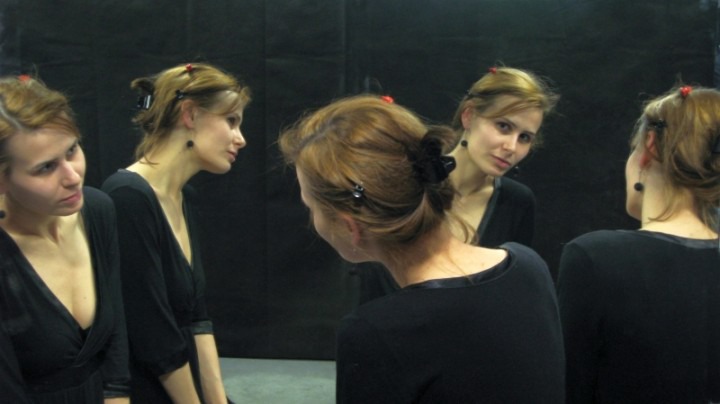Info
Sat, 15.05.2010, from 10pm
Multiple portrait in the mirrors
Installation
Stanislaw Ignacy Witkiewicz (1885-1939) is one of the most interesting and intriguing Polish artists of the 20th century. For this reason his multiple photographic portrait found in the 1970s and taken ca. 1916 in St. Petersburg has quickly become famous, as it symbolised a versatile artist realising his work in various artistic domains. The photograph was taken with the use of a well-known trick to multiple the photographed person in mirrors. Thus the photograph presents an optical illusion – five of the artist own persons sitting around the table.
When the Witkiewicz’s multiple portrait was found, several other such portraits by other artists were already known: the portrait of Polish architect Waclaw Szpakowski from 1912 taken in Riga, of Italian futurist Umberto Boccioni, pictures of Marcel Duchamp and his friend Henri-Pierre Roché both taken in 1917 in New York, and a photograph taken by Hanah Höch. For several years, till the discovery of a source of the photographic trick, the photos of Witkiewicz and Szpakowski passed as their self-portraits.
The method of taking such multiple photographs was described by Albert Hopkins in his book ‘Magic. Stage Illusions and Scientific Diversions, Including Trick Photography’, published in New York in 1897. The photographic tricks depicted by Hopkins were fragmentary published in the book by Hermann Schnauss ‘Photographischer Zeitvertrieb’ issued in Leipzig in 1903. Possibly there are other publications describing various optical phenomena to be used in photography. At the turn of the 19th and 20th century there was a sort of fashion for funny photographs using the effect of multiple reflection in mirrors. Numerous photographic studios in the United States, but also in European countries including Russia and Poland, offered such pictures regarded as amusing curiosity. There are preserved many multiple photographs of anonymous persons. Therefore, there is nor reason to emphasise which of those artists: Szpakowski, Duchamp or Witkiewicz was first one to have his multiple photographic portrait taken, as many anonymous people had done it before them. We may only consider the significance that each of the artists lent to this photograph.
(Abstract of: Stefan Okołowicz, Stanisław Ignacy Witkiewicz – ‘Multiple Portrait’, ‘Multiple Photograph’ or ‘Quintuple Photograph’?, Rocznik Historii Sztuki (Yearbook of Art History), 2006, vol. 31, pp. 173-186)

